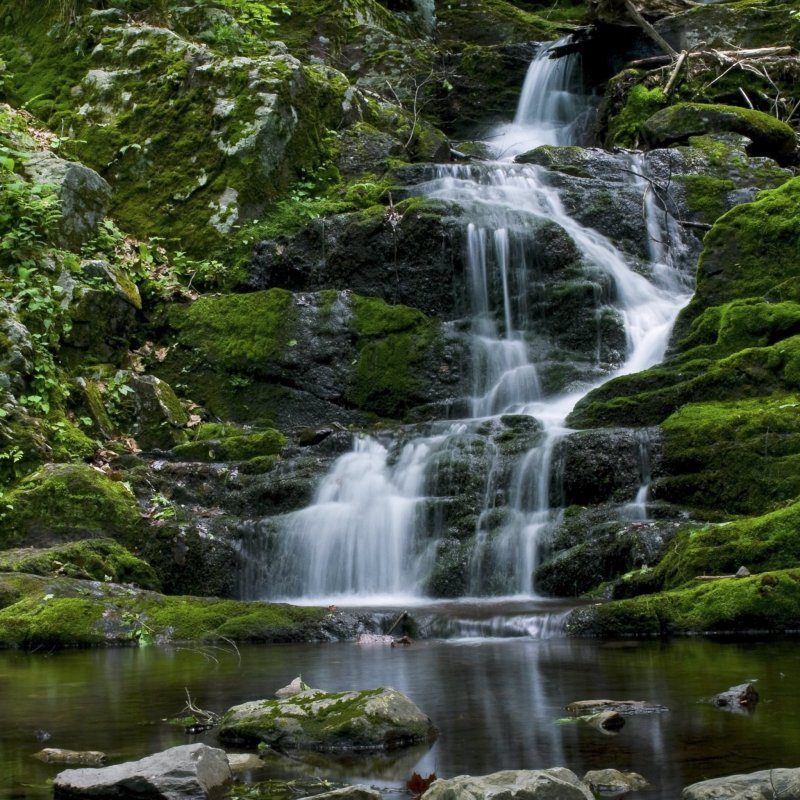
The Delaware Water Gap is one of the best day or weekend trips that you can take from New York City, Philadelphia, or New Jersey. My partner and I have had a weekend home in the area for the past six years and have taken too many hikes to count along these trails. I love waterfalls and the Gap has tons of them — some easily accessible and others more of a challenge. If you want to hike, camp, kayak, canoe, rock climb, or fish, the Gap is the place to be.
Videos by TravelAwaits
Running through New Jersey and Pennsylvania, the Delaware Water Gap spans nearly 200 miles. The Gap was created by the Delaware River passing through (and creating a gap within) the Blue Mountains in Pennsylvania and the Kittatinny Ridge in New Jersey. The Appalachian Trail also passes through the Delaware Water Gap.
Below are six of our favorite hikes in the northern area of the Gap. Two of these hikes are in New Jersey (Buttermilk Falls, Stokes State Forest) and four are in Pennsylvania (Raymondskill, Hornbeck/Upper Indian Ladders, McDade Trail, and Milford Knob).
Upper Indian Ladders Falls At Hornbecks Creek Trail
Hornbecks Creek Trail is one of the most beautiful hikes in the Gap. Since it’s mostly hiked by locals, it is often not crowded. It’s an easy walk to the first two waterfalls (less than half a mile) and then much more difficult after that.
There are three trailheads. The first trailhead is a narrow opening right in the back of the small parking area. It can get overgrown in the summer and becomes hard to see. If you go through the opening, it leads you to a very easy trail and great views of the first two waterfalls. If you want to see the third waterfall, you have to climb down a very steep hill. The view of the last waterfall is better from the third trail.
The second trailhead is a short walk from the parking lot. That trail runs along the creek. It’s a lovely hike (and a bit muddy), but you can’t go far enough to see the waterfalls.
The third trailhead is a few minutes further away. This entry brings you to the best view of the third and largest of the waterfalls. It is easy in the beginning and steep with stairs down to the bottom of the falls at the end. The trail is well maintained and flat. When you reach a fork in the trail, go left to the waterfall. This will lead you to a set of steep stairs with handrails. Follow the stairs down and you will be rewarded. It’s a lovely spot for a picnic.
There is parking along Emery Road, where you’ll find room for three cars. If you do the short version of this hike, you do not need hiking boots or walking sticks. If you want to go to the third waterfall, you will need them.

Raymondskill Falls Loop Trail
Raymondskill Falls is a very popular and easy hike to a spectacular waterfall. Round trip, it is less than one mile. The elevation change is under 100 feet and there are stairs. Hiking boots are not required for this trail, and it can be done by families with children.
There are two parking lots (upper and lower) and bathroom facilities (check before you go to make sure they are open) at the upper lot. The trail at the upper parking lot leads to the top of the falls. There are viewing platforms. You can walk down the stairs to get to the bottom of the falls.
The trail that goes from the lower parking lot leads you to the bottom of Raymondskill Creek and another view of the waterfall. You can also hike along the creek from there to get away from the crowds. Don’t forget to look down — there are rocks with fossils (a great activity for children).
Raymondskill gets very crowded and it can be difficult to find parking.

Stokes State Forest
Stokes State Forest is a hiking paradise. There are well-marked trails and adventures for hikers of all experience levels.
One of our favorite hikes starts from Stony Lake. You’ll want to have water, hiking boots, a walking stick, and good knees for this hike. Tower Trail (Green) starts relatively moderate. The trail is well marked but very rocky. It becomes even rockier at the top (it’s not quite rock climbing, but close). The views are amazing from the top. Instead of clambering down the rocks for the return trip, we recommend following the Appalachian Trail (White) and then Coursen Trail (Brown) back down to the Stony Lake parking lot. Round trip, this hike is 5.4 miles. It took us about three hours, so make sure to start early enough in the daytime.
You can also fish, camp, and swim in Stokes State Forest. Check out the website before you go to pick a trail that interests you.

Buttermilk Falls And Crater Lake Loop Trail
Buttermilk Falls is New Jersey’s highest waterfall. The falls are easily viewable from the parking lot. To do a real hike, you’ll have to climb the stairs to the top. The stairs are steep but have handrails. There are several variations of hikes that you can do from the top of the stairs. To go to Crater Lake, start by following the blue trail for a mile and then take the Appalachian Trail. This trail loop is 6.1 miles round trip. This is a hard trail and best done in good, dry weather. Hiking boots and walking sticks or poles are advised. And, don’t forget water.
McDade Trail
Spanning over 30 miles, the McDade Trail runs alongside the Delaware River, starting at the Hialeah trailhead and ending at Milford Beach in Milford, Pennsylvania. The trail runs parallel to the river. In the early spring and fall, you can see the river through the trees. Later in the season, you’ll have to find a break in the trees to see the river. This hike is beautiful in the fall as the leaves change. It is relatively flat and easy, though you are walking in the woods, and there are lots of tree roots in some sections. Hiking boots are a good idea.
Most trailheads are about five miles apart. You’ll see parking areas as you drive. Parts of the McDade Trail can be done on a mountain bike. In the winter, there are some areas where you can cross-country ski. We generally hike along the northern part of the trail. The southern part starts in Hialeah and there are free shuttle busses to that section of the trail.
Milford Knob
Milford knob is a moderately difficult hike that leads to a scenic view of the Delaware River and the valley around it. You will be hiking through the forest to an elevation of 500 feet at the top of a ridge. It is well worth the effort. We particularly like it in the fall as you can see miles and miles of fall colors from the top. Hiking boots are useful (especially if you decide to do this in winter), but the hike can be done in sneakers.
Pro Tip
It is possible to do some of these hikes any time of the year. The harder hikes listed shouldn’t be done in the dead of winter unless you are a very experienced hiker. Some of the shorter hikes can be done any time of year, but be very mindful of the stairs. If you are hiking during the spring or after a heavy rainfall, expect some of these trails to be very muddy.
In March of 2017, there was an extremely bad snowstorm that damaged many of the parks on the Pennsylvania side of the Delaware Water Gap. Some parks still remain closed, including George W. Childs Park. You will see many downed trees at Hornbecks Creek and Stokes as a result of this storm. On the Hornbecks Creek trail, you will need to step over some trees to get to the third waterfall.
If you are hungry after hiking, the town of Milford, Pennsylvania, has a number of restaurants. Vacationing in the area? Consider visiting these eight excellent hidden gems in New Jersey.
